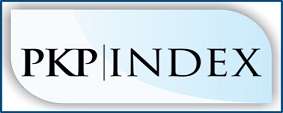Reversible Thinking Ability in Solving Mathematics Problems
Abstract
Reversible thinking is the process of thinking by reversing the order of actions. Reversible thinking is an important aspect in helping to improve students' problem-solving ability. This research aims to analyze qualitative studies related to students' reversible thinking ability at elementary, middle, and high school levels in the period 2002 - 2022. The research method uses a Systematic Literature Review (SLR) that collects primary data that has been published in Sinta and Scopus indexed journals. Data extraction was adjusted to the selection criteria so that 19 articles were collected. Data analysis used a qualitative approach. Data grouping was done based on publication year, education level, demographics, journal indexer, material analyzed, and research results. The results shows that research related to reversible thinking ability became a trend in research in 2015-2022 with the topic of algebra. The studies related to this reversible thinking process are mostly conducted in the Java region at the elementary school level. However, this reversible thinking ability at all levels of education is still low. Based on the three aspects of reversible thinking, working backwards is the most difficult aspect for students to do. One of the reasons is because students do not understand the concept thoroughly. This is a concern for researchers and educators to conduct research related to students' reversible thinking ability, especially outside the region with topics that are still rarely studied.
Downloads
References
Ahmad Nizar Rangkuti. (2015). Hubungan Kecerdasan Ganda Dengan Hasil Belajar Topik Aljabar Siswa Kelas VIII Mtsn 2 Padangsidimpuan. Logaritma, III(02), 1–11.
Ariati, C., & Juandi, D. (2018). Kemampuan Penalaran Matematis. Angewandte Chemie International Edition, 6(11), 951–952., 1(2), 10–27.
Balingga, E., Prahmana, R. C. I., & Murniati, N. (2016). Analisis Kemampuan Reversibilitas Siswa MTs Kelas VII dalam Menyusun Persamaan Linier. Jurnal Review Pembelajaran Matematika, 1(2), 117–131. https://doi.org/10.15642/jrpm.2016.1.2.117-131
Egger, M., Davey Smith, G., & Sterne, J. (2009). 623 Systematic reviews and meta-analysis. In R. Detels, R. Beaglehole, M. A. Lansang, & M. Gulliford (Eds.), Oxford Textbook of Public Health (p. 0). Oxford University Press. https://doi.org/10.1093/med/9780199218707.003.0039
Firma, Y. (2010). Jurnal pendidikan matematika. Jurnal Pendidikan Matematika, 4(2), 111–121. https://ejournal.unsri.ac.id/index.php/jpm/article/view/816/229
Flanders. (2014). Investigating Flexibility , Reversibility , And Multiple Representations In A Calculus Environment by Steven Todd Flanders Bachelor of Science , Grove City
College , 2004 Master of Education , Gannon University , 2006 Submitted to the Graduate Faculty of. Thesis.
G. Polya. (2010). How to Solve it. In Stochastic Optimization in Continuous Time. https://doi.org/10.1017/cbo9780511616747.007
Hackenberg, A. J. (2010). Students’ reasoning with reversible multiplicative relationships. Cognition and Instruction, 28(4), 383–432. https://doi.org/10.1080/07370008.2010.511565
Juandi, D., & Tamur, M. (2021). The impact of problem-based learning toward enhancing mathematical thinking: A meta-analysis study. Journal of Engineering Science and Technology, 16(4), 3548–3561.
Kek, M.Y.C.A.; and Huijser, H. (2011). The power of problem-based learning in developing critical thinking skills: Preparing students for tomorrow’s digital futures in today’s classrooms. Higher Education Research and Development, 30(2011), 329-341. https://doi.org/10.1080/07294360.2010.501074
Kemendikbudristek. (2022). Permendikbud Tentang Standar Isi Pada PAUD, Jenjang Pendidikan Dasar dan Menengah. 1–122.
Krutetskii, V. A. (1976). The psychology of mathematical abilities in schoolchildren. Chicago: The University of Chicago Press.
Kurnia Putri, D., Sulianto, J., & Azizah, M. (2019). Kemampuan Penalaran Matematis Ditinjau dari Kemampuan Pemecahan Masalah. International Journal of Elementary Education, 3(3), 351. https://doi.org/10.23887/ijee.v3i3.19497
Kurniawati, D., & Sutiarso, S. (2022). Analisis Kemampuan Reversible Thinking Matematis Siswa SMA Pada Konsep Kalkulus. … Cendekia: Jurnal Pendidikan Matematika. https://j-cup.org/index.php/cendekia/article/view/1464
Lame, G. (2019). Systematic literature reviews: An introduction. Proceedings of the International Conference on Engineering Design, ICED, 2019-Augus(July), 1633–1642. https://doi.org/10.1017/dsi.2019.169
Maf’Ulah, S., Fitriyani, H., Yudianto, E., Fiantika, F. R., & Hariastuti, R. M. (2019). Identifying the reversible thinking skill of students in solving function problems. Journal of Physics: Conference Series, 1188(1). https://doi.org/10.1088/1742-6596/1188/1/012033
Maf’ulah, S., & Juniati, D. (2020a). Exploring reversible thinking of preservice mathematics teacher students through problem-solving task in algebra. Journal of Physics: Conference Series, 1663(1). https://doi.org/10.1088/1742-6596/1663/1/012003
Maf’ulah, S., & Juniati, D. (2020b). The Effect of Learning with Reversible Problem-Solving Approach on Prospective-Math-Teacher Students’ Reversible Thinking. International Journal of Instruction. https://eric.ed.gov/?id=EJ1249071
Maf’ulah, S., Juniati, D., & Siswono, T. (2016). Pupils’ Error on the Concept of Reversibility in Solving Arithmetic Problems. Educational Research and Reviews, 11(18), 1775–1784. https://doi.org/10.5897/ERR2016.2895
Maf’ulah, S., Juniati, D., & Siswono, T. Y. E. (2017). The aspects of reversible thinking in solving algebraic problems by an elementary student winning national Olympiad medals in science. World Transactions on Engineering and Technology Education, 15(2), 189–194.
Marbawi, M. I., & Salim, T. A. (2019). Mempertahankan keaslian arsip elektronik di era digital berdasarkan tinjauan literatur sistematis. Berkala Ilmu Perpustakaan Dan Informasi, 15(2), 149. https://doi.org/10.22146/bip.47370
Marisa, G., Syaiful, S., & Hariyadi, B. (2020). Analisis Kesalahan Siswa Dalam Menyelesaikan Soal Operasi Aljabar Berdasarkan Taksonomi SOLO. Jurnal Pendidikan Matematika, 11(1), 77. https://doi.org/10.36709/jpm.v11i1.9971
Pirmanto, Y., Farid Anwar, M., & Bernard, M. (2020). Analisis Kesulitan Siswa SMA dalam Menyelesaikan Soal Pemecahan Masalah pada Materi Barisan dan Deret dengan Langkan-langkah Menurut Polya. Jurnal Pembelajaran Matematika Inovatif, 3(4), 371–384. https://doi.org/10.22460/jpmi.v3i4.371-384
Ramful, A. (2014). Reversible reasoning in fractional situations: Theorems-in-action and constraints. The Journal of Mathematical Behavior. https://www.sciencedirect.com/science/article/pii/S0732312313000990
Robinson, K. M., & LeFevre, J. A. (2012). The inverse relation between multiplication and division: Concepts, procedures, and a cognitive framework. Educational Studies in Mathematics, 79(3), 409–428. https://doi.org/10.1007/s10649-011-9330-5
Sangwin, C. J., & Jones, I. (2017). Asymmetry in student achievement on multiple-choice and constructed-response items in reversible mathematics processes. Educational Studies in Mathematics, 94(2), 205–222. https://doi.org/10.1007/s10649-016-9725-4
Saparwadi, L., Sa’dijah, C., As’ari, A. R., & Chandrad, T. D. (2020). The aspects and stages of reversible thinking of secondary school students in resolving the problems of fractional numbers. Systematic Reviews in Pharmacy, 11(6), 1302–1310. https://doi.org/10.31838/srp.2020.6.190
Sari, A. R., & Aripin, U. (2018). Analisis Kesalahan Siswa Dalam Menyelesaikan Soal Cerita Bangun Datar Segiempat Ditinjau Dari Kemampuan Pemecahan Masalah Matematik Untuk Siswa Kelas Vii. JPMI (Jurnal Pembelajaran Matematika Inovatif), 1(6), 1135. https://doi.org/10.22460/jpmi.v1i6.p1135-1142
Sutiarso, S. (2020). Analysis of Student Reversible Thinking Skills on Graph Concept. Indonesian Journal of Science and Mathematics …, 3(2), 185–195. http://103.88.229.8/index.php/IJSME/article/view/6768
Zlatko Stapić, Eva García López, Antonio García Cabot Luis, & Vjeran Strahonja. (2006). Performing systematic literature reviews in software engineering. Proceedings - International Conference on Software Engineering, 2006(December 2014), 1051–1052. https://doi.org/10.1145/1134285.1134500
Copyright (c) 2022 Aneu Pebrianti, Dadang Juandi, Elah Nurlaelah

This work is licensed under a Creative Commons Attribution-ShareAlike 4.0 International License.



1.jpg)














